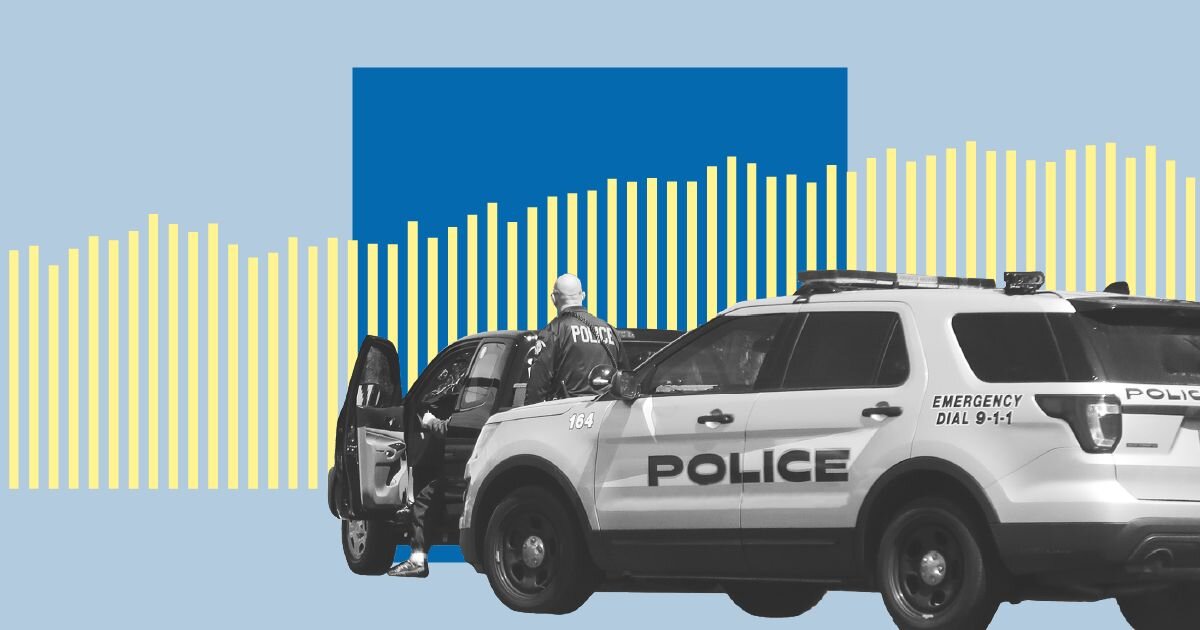In 2022, the national property crime rate increased for the first time in over two decades, rising 6.7% from 1,832 property crimes per 100,000 people in 2021 to 1,954 in 2022.
What is property crime?
The National Institute of Justice defines property crime as the theft or destruction of property without threats or injuries to the owner. In tracking national crime rates, the Federal Bureau of Investigation (FBI) distinguishes property crime from violent crime. The FBI’s property crime rate data includes:
- Burglary
- Larceny-theft
- Motor vehicle theft
Arson is also considered a property crime, but the FBI doesn't include it because the available data is too limited.
Subscribe to get unbiased, data-driven insights sent to your inbox weekly.
What is burglary?
Burglary is the unlawful entry of a building to commit a felony or theft. The FBI’s Uniform Crime Reporting Program subcategorizes burglary into forcible entry, unlawful entry without force, and attempted forcible entry.
What is larceny-theft?
Larceny-theft, sometimes shortened to larceny, is legalese for "stealing." Larceny is defined as the unlawful taking of another person’s or entity’s property without the use of force, violence, or fraud. Examples include:
- Bicycle theft
- Shoplifting
- Pickpocketing
- Stealing car parts
What is motor vehicle theft?
Theft of car parts is considered larceny, but theft of a whole vehicle — or attempted theft — is its own category of property crime.
How have crime rates changed?
The national violent crime and property crime rates both peaked in 1991 before decreasing in the decades since.
Violent crime has dropped by nearly 50% in that time, falling from 758 incidents per 100,000 people in 1991 to 381 in 2022. Much of that decrease happened in the 1990s and early 2000s. From 2011 to 2022, the rate varied between 362 and 399 offenses per 100,000 people.
The property crime rate has declined by 62% since the 1991 peak, dropping from 5,140 offenses per 100,000 people in 1991 to the 2022 rate of 1,954. It decreased year-over-year in all years except between 2000–01 and 2021–22.
USAFacts has more on shifting crime rates in the 2024 State of the Union in Numbers report.
What are the most common types of property crime?
In 2022, 71.7% of property crime was larceny-theft, 14.5% was motor vehicle theft, and 13.8% was burglary.
Burglary used to make up a larger share of property crimes. As recently as 2011, 24.1% of property crimes were burglaries, while 67.9% were larceny-theft and 7.9% were motor vehicle theft.
What kinds of property crime are driving the overall increase?
The recent 6.7% increase in the property crime rate was a change of course after decreases of 8.1% and 6.4% from 2019 to 2020 and 2020 to 2021, respectively.
From 2021 to 2022, the rate of the most frequent property crime, larceny, rose 7.4% from 1,306 offenses per 100,000 people to 1,402. Motor vehicle theft rose by 10.5%, from 256 offenses per 100,000 to 283.
Meanwhile, burglary rates dipped 0.4% from 271 offenses per 100,000 to 270.
What does the data miss?
The FBI Crime Data Explorer includes reported crime, which represents only a portion of all crime that occurs.
Learn more about crime in the US, and get data directly in your inbox by signing up for our newsletter.
Related crime articles
Read data analyses written by the USAFacts team.
Page sources and methodology
All of the data on the page was sourced directly from government agencies. The analysis and final review was performed by USAFacts.
Federal Bureau of Investigation
Crime Data Explorer


